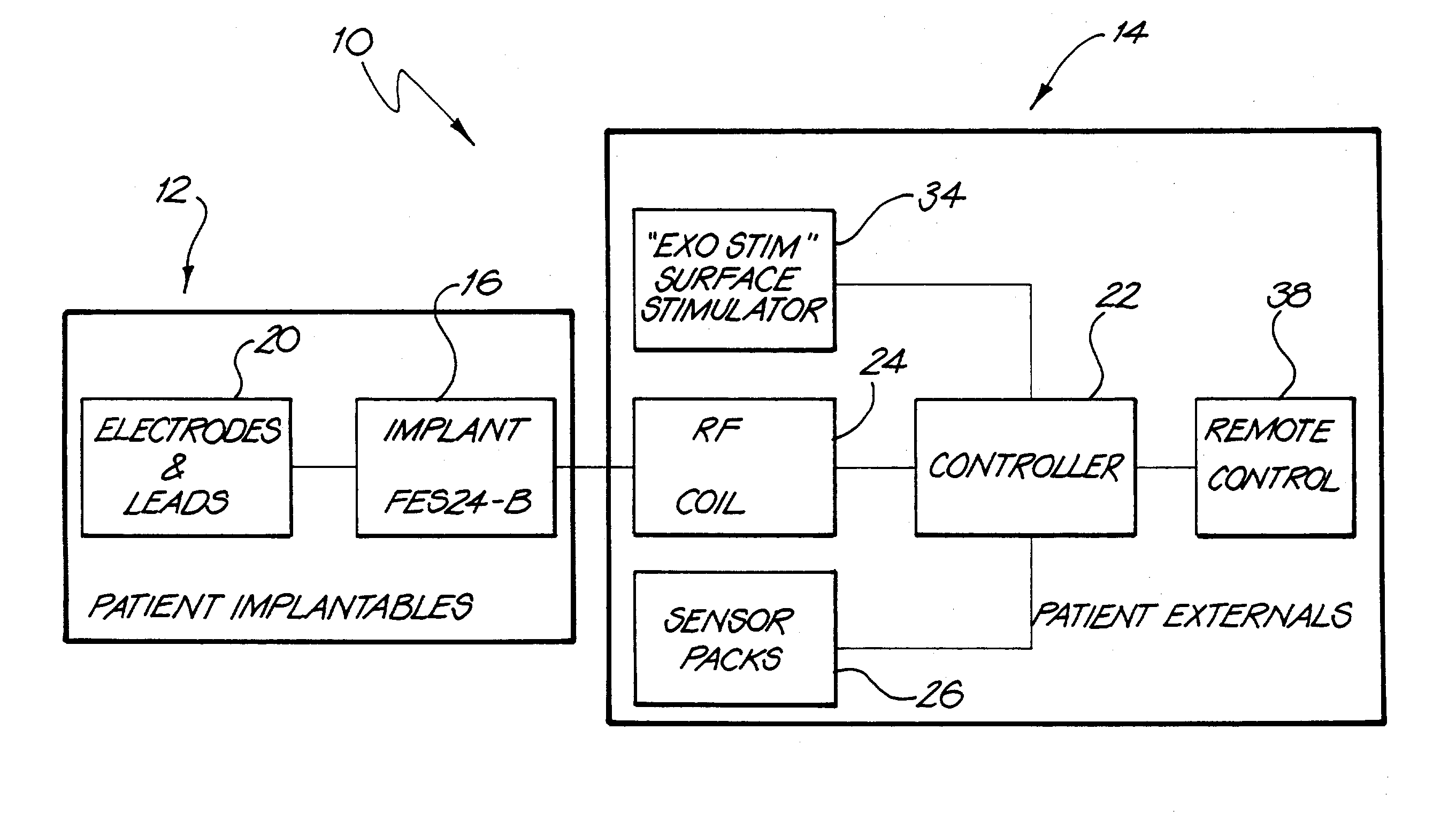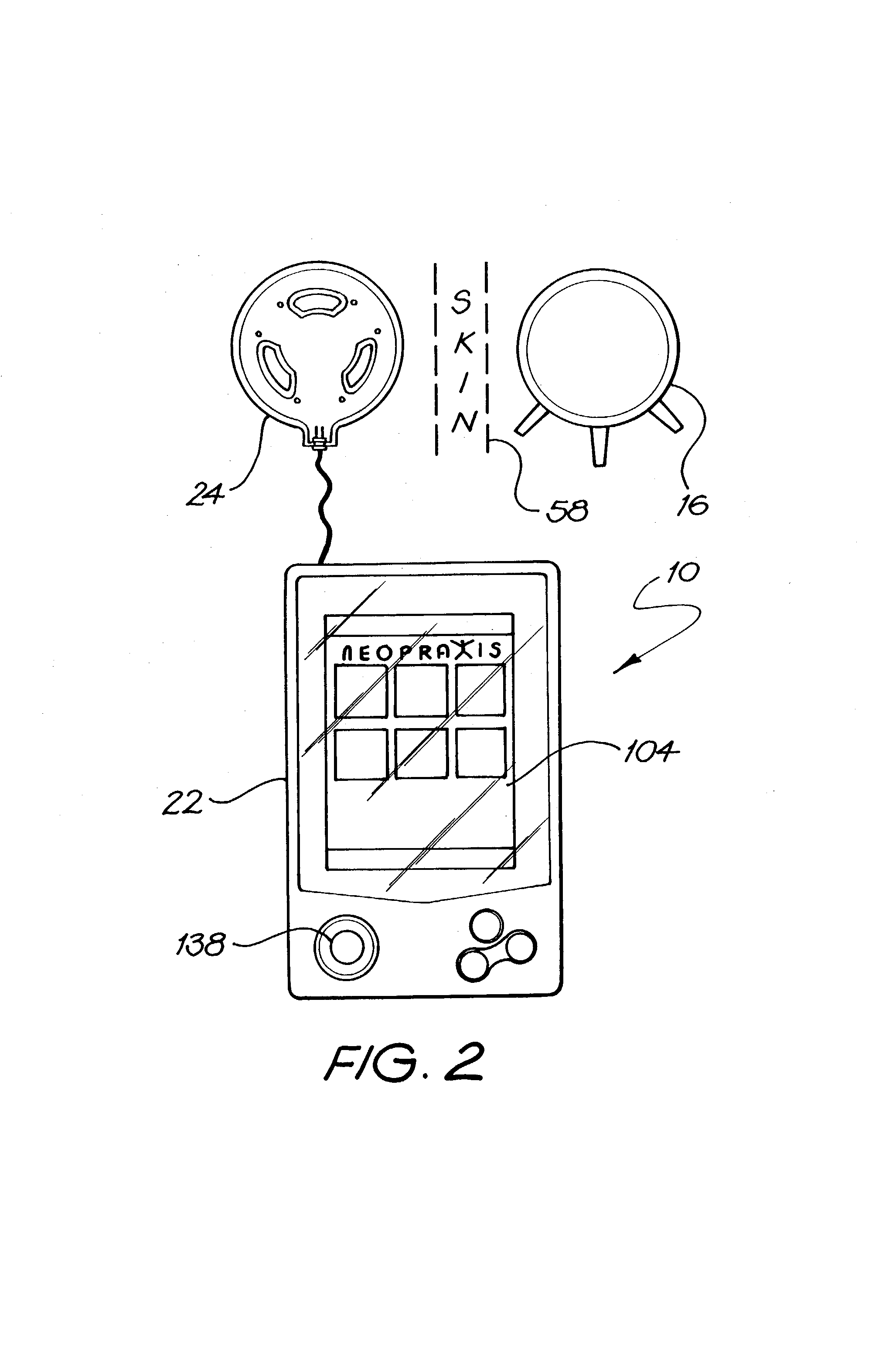Multi-purpose FES system
a multi-purpose, electrical stimulation technology, applied in the field of functional electrical stimulation (fes) systems, can solve the problems of varying degrees of impairment, impaired use of arms and hands as well as legs, and the person who has suffered such an injury generally experiences significant loss of sensation and volitional body movemen
- Summary
- Abstract
- Description
- Claims
- Application Information
AI Technical Summary
Benefits of technology
Problems solved by technology
Method used
Image
Examples
Embodiment Construction
[0064]In the drawings, reference numeral 10 generally designates a multi-purpose (FES) system in accordance with the invention. The system 10 includes a patient-implantable part 12 and an external part 14, the external part 14, in use, being arranged externally of a patient's body 18 (FIGS. 20a and 20b). The patient-implantable part 12 includes an implantable stimulator 16 for stimulating different sites in the patient's body 18. A plurality of leads and electrodes 20 extend from the stimulator 16, as will be described in greater detail below, for attachment to the various sites in the patient's body 18 to effect stimulation of those sites.
[0065]The external part 14 of the system 10 includes a controller 22 which controls the stimulator 16 via an externally worn transmission device 24.
[0066]The external part 14 of the system 10 further includes a plurality of sensor packs 26 in communication with the controller 22. The sensor packs 26 are mounted, in use, on the right lower extremit...
PUM
 Login to View More
Login to View More Abstract
Description
Claims
Application Information
 Login to View More
Login to View More - R&D
- Intellectual Property
- Life Sciences
- Materials
- Tech Scout
- Unparalleled Data Quality
- Higher Quality Content
- 60% Fewer Hallucinations
Browse by: Latest US Patents, China's latest patents, Technical Efficacy Thesaurus, Application Domain, Technology Topic, Popular Technical Reports.
© 2025 PatSnap. All rights reserved.Legal|Privacy policy|Modern Slavery Act Transparency Statement|Sitemap|About US| Contact US: help@patsnap.com



